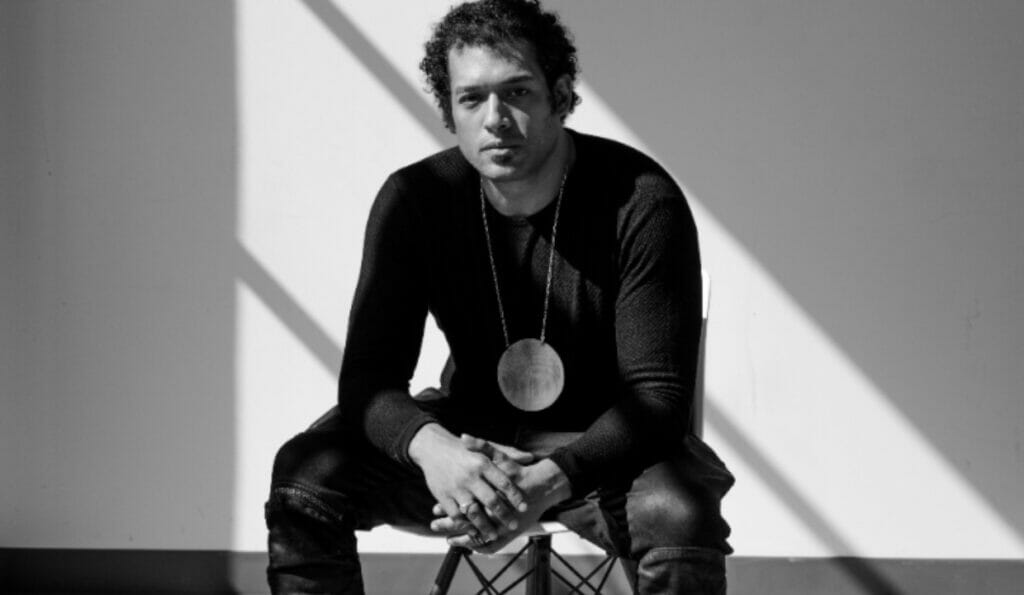Makaya McCraven: Beat Scientist

It wouldn’t be incorrect to call Makaya McCraven a terrific drummer—after all, he’s certainly that—but he prefers the phrase beat scientist. “A beat scientist,” he says by way of elucidation, “is somebody who is studying rhythm and time and beats—whether we’re talking about beats in the colloquial sense, like hip-hop beats and rhythms and drum beats and funk beats and DJ beats, or about pulse and how rhythm functions in music and in a physiological way.”
It would also not be incorrect to say that the 38-year-old, Chicago-based McCraven is a jazz artist because the music generally known as jazz is at the core of what he does.
Except that he really doesn’t care for the “j word,” and gets pretty vocal when—as has happened on more than one occasion—he’s credited with helping to “save” jazz.
“People pose a question: ‘Is jazz dead?’ If you’ve got to ask the same question for 60-plus years, it’s a dumb question,” he says. “I find that the word jazz is offensive at worst and totally insufficient to describe the phenomenon of what we’re dealing with at best. I’m not here to save anything,” he adds. “I’m here to be saved by this music. I’m here to take part in it. I’m here to learn from the music and the people who’ve made it and to continue to grow. I respect those who have done this before us and what they did—what they said and how they moved through this world. I take what I like and do what I gotta do the way I gotta do it. I try to be there for the next generation of musicians— to give them advice, to give them gigs, but also to learn from them. The music doesn’t need to be saved because there’s always going to be young musicians that just want to be able to play their asses off!”
So now that we know what Makaya McCraven isn’t, well, what is he? His official bio calls him a “sonic collagist,” but perhaps the question is best answered simply by giving a listen to Deciphering the Message, his debut album for Blue Note Records. McCraven, who is also a champion producer and peerless remixer, has created a unique work that simultaneously pays tribute to the venerable label’s legacy and moves it forward. The recording consists of 13 jams that sample from classic Blue Note albums—by the likes of Hank Mobley, Bobby Hutcherson, Kenny Dorham, Horace Silver, Dexter Gordon, Kenny Burrell and Art Blakey & the Jazz Messengers—and rebirths them with contemporary sounds performed by McCraven and several other young musicians.
“The inspiration to want to do this is just my curiosity,” McCraven says, “wanting to investigate that, wanting to participate, wanting to grow and learn how it’s done. Then, within that, I find my own voice and my own way of using these new skills to create something that’s of my voice.”
In order to piece together what became Deciphering the Message, McCraven listened to countless classic Blue Note LPs. He was not aware of all of the label’s artists and their key releases, but discovering them was a vital part of the creative process. “I did a lot of digging, going through records and familiarizing,” he says. “I had a number of different themes that I was interested in following because I always like to have some narrative, not just a collection of music. Different tracks caught my ear and I started to work on them until, by the end of the digging, they started to coalesce. Then, as it developed, I found more and more ways to connect the narrative.
“Something that I really wanted to drive home with the project,” he continues, “is that this music was made by young people. That gets lost in translation, or lost in the history. Lee Morgan and Herbie Hancock and Wayne Shorter— these guys were in their early twenties. They were innovators who were taking part in something that was hip and current. I can relate to that. I don’t want to think of these cats as hundred-year-old dinosaurs because that’s not who made this music. These were the hippest cats. They were going against the grain.”
Sonically, and in its usage of rhythm, Deciphering the Message owes as much to hip-hop sensibilities as it does to the decades-old improvisational music that it’s based on. It follows We’re New Again: A Reimagining by Makaya McCraven, a 2020 release devoted specifically to the music of the late singer/ poet and musician Gil Scott-Heron, as well as albums like In the Moment (2015), Highly Rare (2017) and Universal Beings (2018)—each of which has advanced McCraven’s reputation as an artist/producer with a singular vision. One might wonder what the artists McCraven sampled for Deciphering the Message might think of what he’s done with their music. “I’d hope that these open-minded musicians would hear this stuff and be like, ‘That’s hip,’” he says.
He remembers the reaction his own father, himself a drummer, once had to a track that Makaya was concocting. “Years ago, I showed my dad some samples I was doing, samples to my own drums,” McCraven says. “He goes, ‘Man, that shit’s out. It’s cool, it’s hip, but what did you do exactly?’”
McCraven took that comment to heart. “I never feel like I’m out here trying to reinvent the wheel,” he concludes, “even if it’s a little different. Look at Miles [Davis]; he was the architect of the expansiveness of what’s possible with this music. I think he was always interested in what was fresh, what was possible. I definitely take that as a major inspiration.”




















